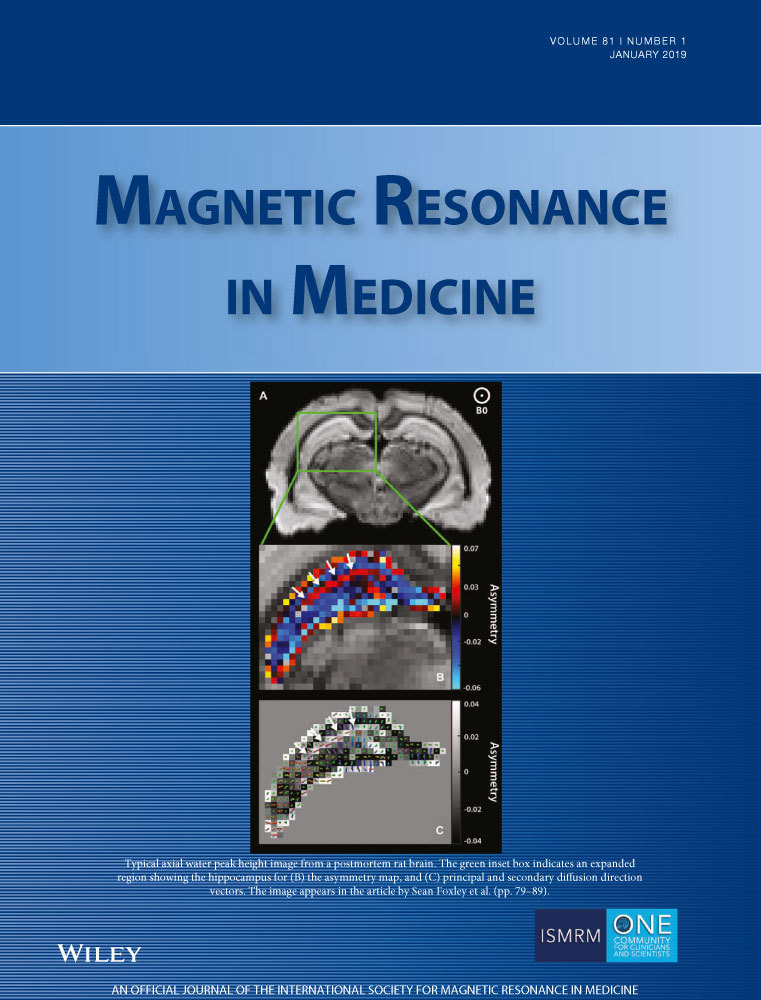Effect of k-space-weighted image contrast and ultrasound focus size on the accuracy of proton resonance frequency thermometry
Funding information: NIH R01 CA172787, R01 EB013433, and S10OD018482; Siemens Medical Solutions
Abstract
Purpose
To construct a predictive model that describes how the duration and symmetry of a k-space-weighted image contrast (KWIC) window affects the temporal resolution of differently sized ultrasound foci when using a pseudo-golden angle stack-of-stars acquisition.
Methods
We performed a modulation analysis of proton resonance frequency temperature measurements to create the temporal modulation transfer function for KWIC windows of different symmetry and temporal duration. We reconstructed simulated ultrasound heating trajectories and stack-of-stars k-space data as well as experimental phantom data using the same trajectories. Images were reconstructed using symmetric and asymmetric KWIC windows of 3 different temporal durations. Simulated results were compared against temporal modulation transfer function predictions, experimental results, and the original simulated temperatures.
Results
The temporal modulation transfer function shows that temporal resolution with KWIC reconstructions depend on the object size. The KWIC window duration affected SNR and severity of undersampling artifacts. Accuracy and response delay improved as the KWIC window duration decreased or the size of the heated region within the KWIC plane increased. Precision worsened as the window duration decreased. Using a symmetric window eliminated the response delay to heated region size but introduced a large reconstruction delay.
Conclusion
The accuracy and precision of proton resonance frequency temperature measurements from a stack-of-stars acquisition using a sliding KWIC window reconstruction are dependent on the size of the KWIC window and the size and shape of the heated region. The temporal modulation transfer function of KWIC reconstructions for any object size can predict the temporal response to changes in signal being acquired, such as temperature and contrast enhancement.




